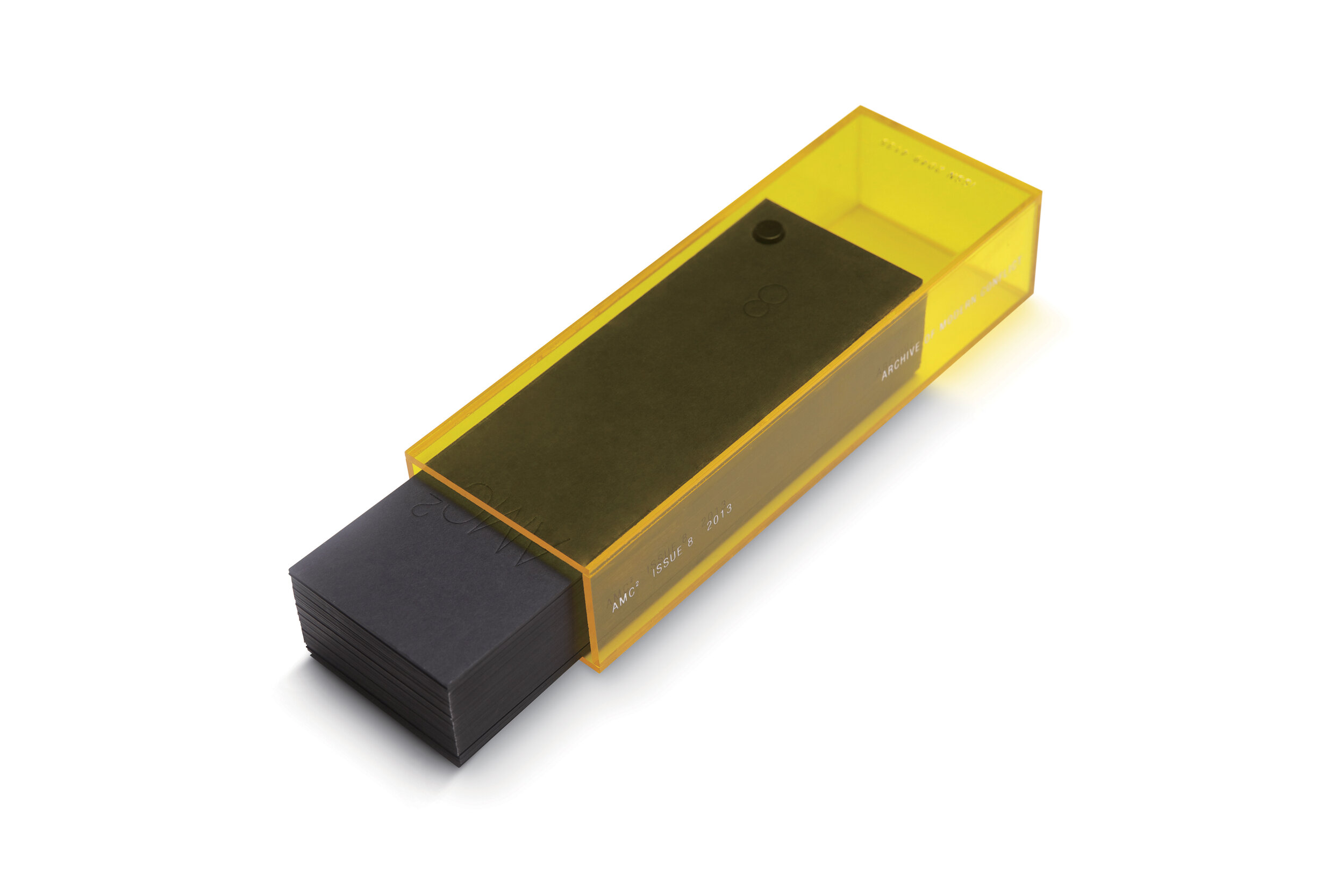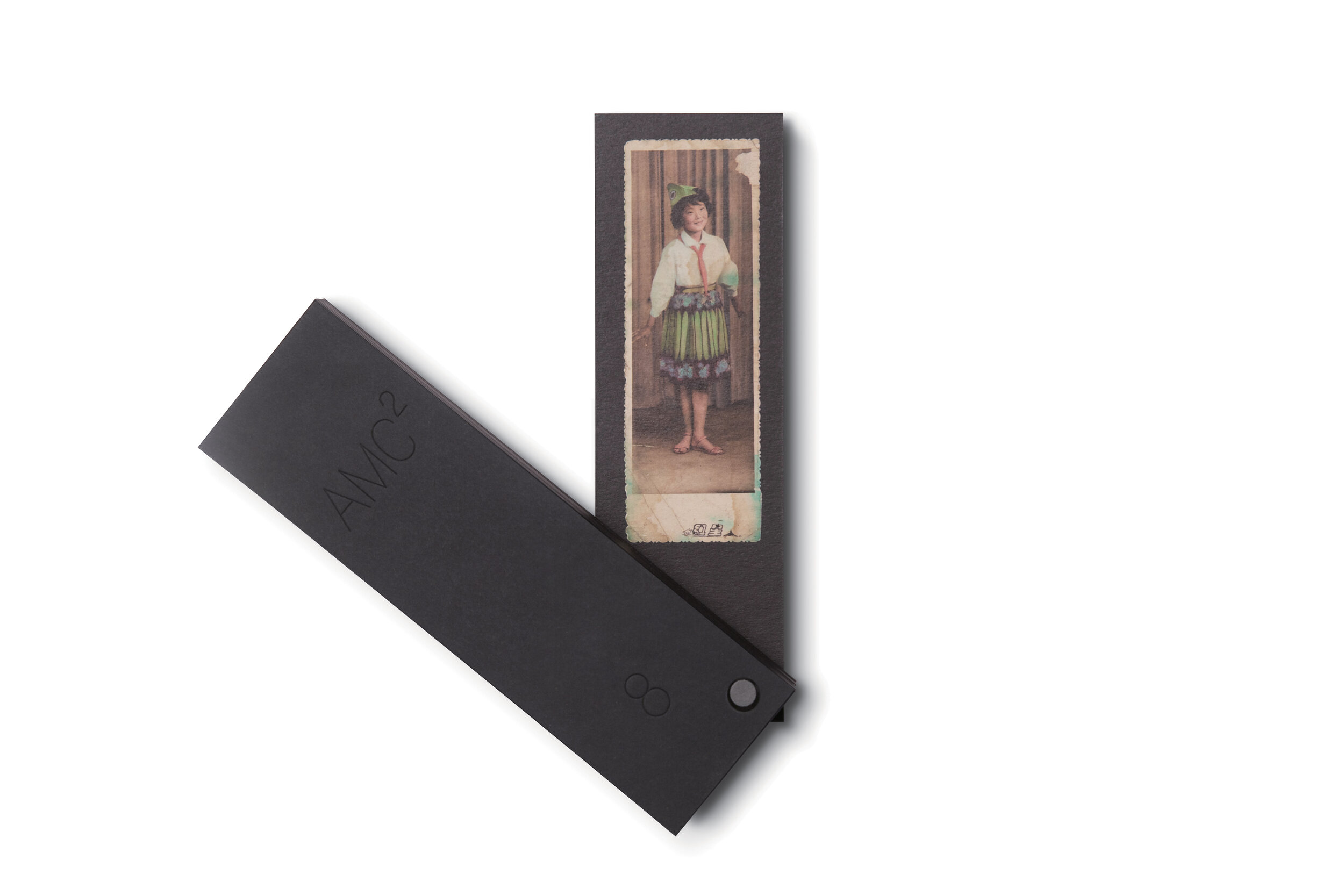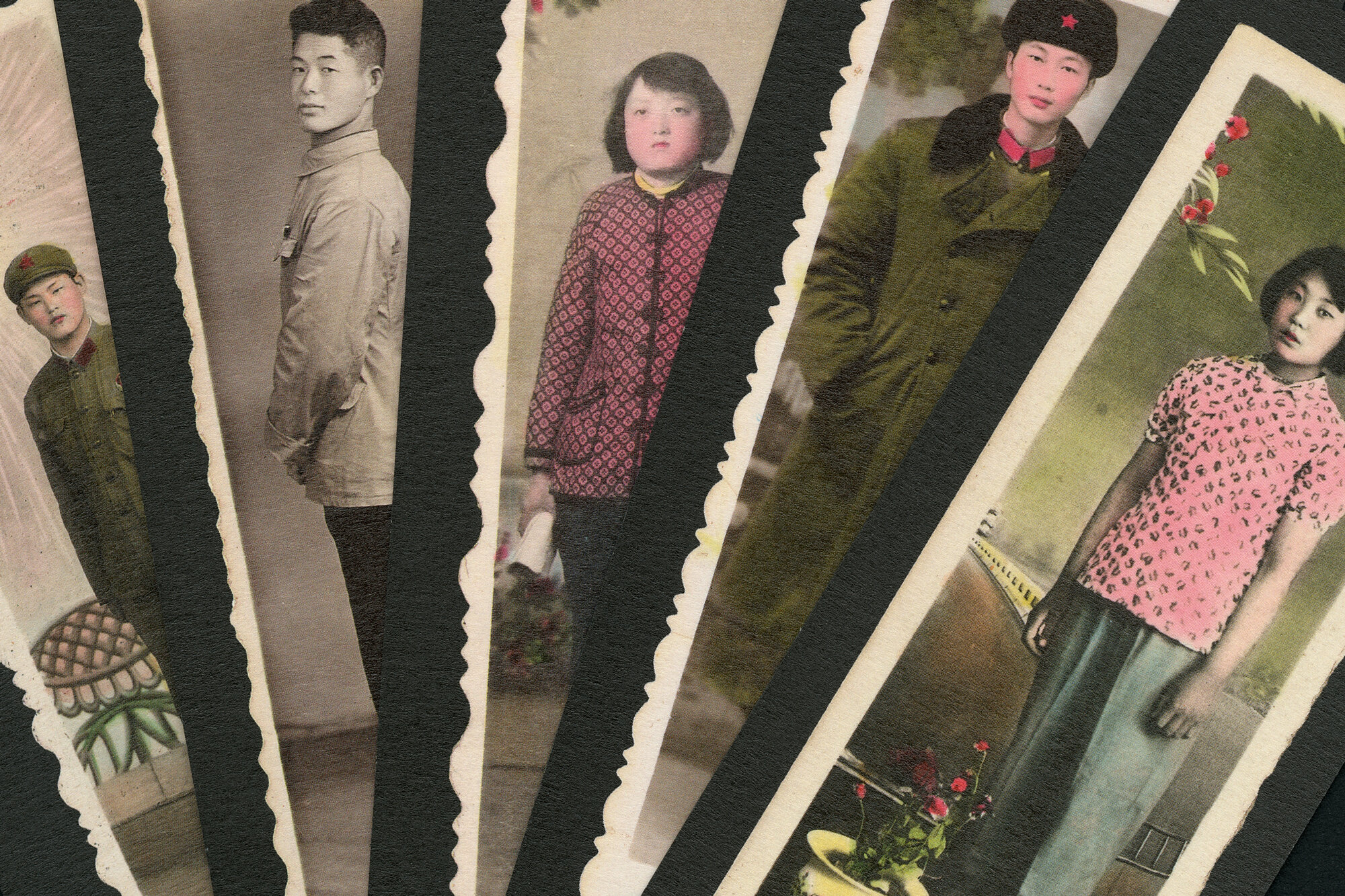Quanshen / 全身 by Thomas Sauvin
Quanshen / 全身 by Thomas Sauvin
19,30 x 6,6 cm / 68 pages
Fan sampler in a PVC box
Publication date: November 2013
Publisher: Archive of Modern Conflict
Design: Mei Shuzhi
ISSN 2048-4135
Signed on request
This publication gathers a selection of portraits made in Chinese studios between the thirties and the eighties. The full-length portrait, where the subject is shot head-to-toe in front of a specific background, is as old as portrait photography itself. But in the Chinese case, in order to cut the costs of this type of portrait, photo studios would offer a previously unseen vertical format, in which the frame restricted the subject to standing straight with its arms along the body. This resulted in a silver print, a sort of tiny photographic coffin, with an average size of 7 cm high by 2.5 cm wide, either black and white or hand-colored.
Through these images, we don't discover individuals as they are, but as they wish to be perceived. Each of these portraits contain an element through which the subject asserts his place in society: the soldier and his gun, the sportswoman and her tennis racket, the nurse and her syringe, the revolutionary and his little red book, the peasant and his straw hat, the photographer and his camera, but also the modem woman and her pink purse...
This accidental reunion of 60 anonymous portraits is reminiscent of the archetypal work of August Sander in Face Of Our Time: an objective, non-judgemental photograph, through which we look at a society right in the eye.
lt is still difficult to stroll through Chinese antique markets without running into these small photographic figurines, which can individually seem strikingly boring. The deeper meaning of these images takes place when they are juxtaposed, revealing fragments of the history of Chinese society, not only its dress codes, but also its behavioral and ideological referentials.
《全身》收集了一系列1930至1980年代摄于中国照相馆的人物肖像。拍摄全身照在人像摄影诞生之初就已存在。要拍摄全身照,拍摄对象从头到脚都要进入镜头中。而在过去,为了降低这类肖像照的费用,照相馆会使用一种特殊的照片规格。画面大小仅能供拍摄对象采用两臂紧贴身体直立这一种姿势。拍好的成品尺寸基本是高7厘米宽2.5厘米,就像一口超级迷你的棺材,多为黑白或手工着色。
这些照片捕捉到的并不是拍摄对象的真我,而是他们希望展示给人们的形象。每张照片中都有能表示主人公社会地位的物件:士兵与枪、运动员和网球拍、护士和注射器、红卫兵和红宝书、农民和草帽、照相师傅和相机、摩登女郎和粉色提包…
这偶然聚集的60张匿名肖像使我们想起了奥古斯特·桑德 (August Sander)在《时代的面孔》(Face of Our Time)中的典型作品:一种客观的,非判断性的摄影,我们可以透过此观看一个社会。
漫步于中国的古玩市场,这类的老照片比比皆是。单单挑出一张来看,不免觉得乏味无趣。但这些照片的价值就在于收集在一起进行欣赏。只有这样,一幅中国社会的画卷才能展现在眼前。它不仅体现了着装风格,还可以作为了解特定时期人们行为和意识形态的参考。









